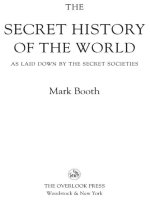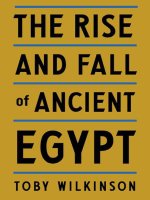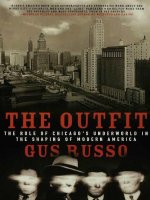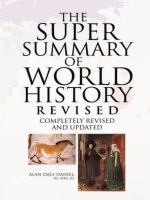Judith herrin women in purple rulers of med ium (v5 0)
Bạn đang xem bản rút gọn của tài liệu. Xem và tải ngay bản đầy đủ của tài liệu tại đây (3.95 MB, 439 trang )
Byzantium
By the same author
The Formation of Christendom
A Medieval Miscellany
Women in Purple
Iconoclasm
(edited with Anthony Bryer)
Constantinople in the early eighth century: the Parastaseis
Syntomoi Chronikai
(edited with Averil Cameron)
Mosaic
(Festschrift for A. H. S. Megaw, edited with Catherine Otten and Margaret Mullett)
Personification in the Greek World: From Antiquity to Byzantium
(edited with Emma Stafford)
JUDITH HERRIN
Byzantium
The Surprising Life of a
Medieval Empire
ALLEN LANE
an imprint of
PENGUIN BOOKS
ALLEN LANE
Published by the Penguin Group
Penguin Books Ltd, 80 Strand, London WC2R 0RL, England
Penguin Group (USA) Inc., 375 Hudson Street, New York, New York 10014, USA
Penguin Group (Canada), 90 Eglinton Avenue East, Suite 700, Toronto, Ontario, Canada M4P 2Y3
(a division of Pearson Penguin Canada Inc.)
Penguin Ireland, 25 St Stephen’s Green, Dublin 2, Ireland
(a division of Penguin Books Ltd)
Penguin Group (Australia), 250 Camberwell Road, Camberwell, Victoria 3124, Australia
(a division of Pearson Australia Group Pty Ltd)
Penguin Books India Pvt Ltd, 11 Community Centre, Panchsheel Park, New Delhi – 110 017, India
Penguin Group (NZ), 67 Apollo Drive, Rosedale, North Shore 0632, New Zealand
(a division of Pearson New Zealand Ltd)
Penguin Books (South Africa) (Pty) Ltd, 24 Sturdee Avenue, Rosebank, Johannesburg 2196, South Africa
Penguin Books Ltd, Registered Offices: 80 Strand, London WC2R 0RL, England
www.penguin.com
First published 2007
1
Copyright © Judith Herrin, 2007
The moral right of the author has been asserted
All rights reserved
Without limiting the rights under copyright
reserved above, no part of this publication may be
reproduced, stored in or introduced into a retrieval system,
or transmitted, in any form or by any means (electronic, mechanical,
photocopying, recording or otherwise) without the prior
written permission of both the copyright owner and
the above publisher of this book
EISBN: 978–0–141–91136–6
For Tamara and Portia,
who also asked,
What is Byzantium?
Contents
List of Illustrations
List of Maps
Introduction: A Different History of Byzantium
I
Foundations of Byzantium
1 The City of Constantine
2 Constantinople, the Largest City in Christendom
3 The East Roman Empire
4 Greek Orthodoxy
5 The Church of Hagia Sophia
6 The Ravenna Mosaics
7 Roman Law
II
The Transition from Ancient to Medieval
8 The Bulwark Against Islam
9 Icons, a New Christian Art Form
10 Iconoclasm and Icon Veneration
11 A Literate and Articulate Society
12 Saints Cyril and Methodios, ‘Apostles to the Slavs’
III
Byzantium Becomes a Medieval State
13 Greek Fire
14 The Byzantine Economy
15 Eunuchs
16 The Imperial Court
17 Imperial Children, ‘Born in the Purple’
18 Mount Athos
19 Venice and the Fork
20 Basil II, ‘The Bulgar-Slayer’
21 Eleventh-Century Crisis
22 Anna Komnene
23 A Cosmopolitan Society
IV
Varieties of Byzantium
24 The Fulcrum of the Crusades
25 The Towers of Trebizond, Arta, Nicaea and Thessalonike
26 Rebels and Patrons
27 ‘Better the Turkish Turban than the Papal Tiara’
28 The Siege of 1453
Conclusion: The Greatness and Legacy of Byzantium
Further Reading
List of Emperors Named in the Text
Chronology
Maps
Acknowledgements
Index
List of Illustrations
Photographic acknowledgements are given in parentheses.
1 Mount Athos, Chalkidike (copyright © Kallirroe Linardou)
2 Mount Sinai, Egypt (copyright © Judith Herrin)
3 Constantinople, land walls (copyright © ArtServe, reproduced by kind permission of
Michael Greenhalgh)
4 Thessalonike, walls of the citadel (copyright © Judith Herrin)
5 Aqueduct of Valens, Constantinople (copyright © Judith Herrin)
6 Obelisk of Theodosius I (copyright © Judith Herrin)
7 Silk roundel (copyright © Dumbarton Oaks, Byzantine Collection, Washington DC)
8 Lead seal of kommerkiarioi (copyright © Dumbarton Oaks, Byzantine Collection,
Washington DC)
9 Pilgrim flask of St Menas (copyright © The Trustees of the British Museum)
10 Frontispiece from the Bible of Leo (copyright © Biblioteca Apostolica Vaticana)
11 Gold coins, Constantinople (copyright © The Henry Barber Coin Collection,
University of Birmingham)
12 Karanlik Kilisse, twelfth century, exterior (copyright © Dick Osseman)
13 Karanlik Kilisse, interior fresco with fork (copyright © Dick Osseman)
14 Ivory plaque of Christ, tenth century, Musée du Cluny, Paris (copyright ©
Bridgeman Art Library)
15 Miniatures from the Khludov Psalter, ninth century (copyright © M. V. Shchepkina,
Miniatiury Khludovskoi Psaltyri (Moscow 1977))
16 Hagia Sophia from the sea (copyright © Dick Osseman)
17 Mosaic of Zoe and Constantine IX flanking Christ, Hagia Sophia (copyright ©
Dumbarton Oaks, Image Collections & Fieldwork Archives, Washington DC)
18 Hagia Sophia, interior from the western gallery (copyright © Dumbarton Oaks,
Image Collections & Fieldwork Archives, Washington DC)
19 Mosaic panel of Empress Theodora, San Vitale, Ravenna (copyright © Bridgeman
Art Library)
20 Mosaic panel of Emperor Justinian, San Vitale, Ravenna (copyright © Bridgeman
Art Library)
21 Icon of Christ, St Catherine’s, Mount Sinai (copyright © the Holy Monastery of St
Catherine, Mount Sinai, reproduced by kind permission of the monastery)
22 Gold coins of Constantine I and Basil II (copyright © The Henry Barber Coin
Collection, University of Birmingham)
23 Chalice of Romanos II, Treasury of San Marco, Venice (copyright © Bridgeman Art
Library)
24 Earring, sixth or seventh century, Benaki Museum (copyright © Benaki Museum,
Athens)
25 Greek fire, from John Skylitzes’ Chronicle (copyright © Biblioteca Nacional Madrid,
reproduced by kind permission of Miletos Press Archive, Athens)
26 Mosaic of Theodore Metochites, Chora monastery, Constantinople (copyright ©
Dumbarton Oaks, Image Collections & Fieldwork Archives, Washington DC)
27 The ‘Triumph of Orthodoxy’, c. 1400, icon (copyright © The Trustees of the British
Museum)
28 Frontispiece from the Psalter of Basil II, c. 1000 (copyright © Biblioteca Nazionale
Marciana, Venice)
29 Basilica of San Marco, west front (copyright © Bridgeman Art Library)
30 Two of the four classical bronze horses erected on the west front after 1204
(copyright © Courtauld Institute, London)
31 Monastery of Hosios Loukas, Steiris, central Greece (copyright © Judith Herrin)
32 Theophilos and The Widow, From John Skylitzes’ Chronicle (Copyright © Biblioteca
Nacional Madrid, reproduced by kind permission of Miletos Press Archives, Athens)
33 Chora monastery, Constantinople (copyright © Courtauld Institute, London)
34 Monastery of the Mother of God, Daphni, central Greece (copyright © Judith
Herrin)
35 Arta, church of the Paregoretissa, exterior (copyright © Lioba Theis)
36 Church of the Paregoretissa, interior (copyright © Lioba Theis)
37 Mistras, the citadel (copyright © Judith Herrin)
38 Book of Job copied by Manuel Tzykandeles, probably in Mistras c. 1362 (Paris
Bibliothèque Nationale; copyright © Bridgeman Art Library)
39 John VI Kantakouzenos presiding over the Council of 1351, c. 1370–75 (Paris
Bibliothèque Nationale; copyright © Bridgeman Art Library)
40 Manuel II Palaiologos and his family, manuscript of Pseudo-Dionysios (Paris, Musée
du Louvre; copyright © Bridgeman Art Library)
41 Dioscorides, De materia medica, ‘Making Lead’, from an Arab translation of 1224,
copied by ‘Abd Allah ibn al-Fadl’ (Paris, Musée du Louvre; copyright © Bridgeman
Art Library)
p. 337 Sundial
Judith Herrin)
anked by peacocks, Skripou, central Greece, 873–4 (copyright ©
List of Maps
1 Constantinople 363
2 The Roman World 364–5
3 The Byzantine Empire and Themata c. 800 366–7
4 The Byzantine Empire c. 1025 368–9
5 Byzantium in the Eleventh and Twelfth Centuries 370–71
6 The Division of Byzantium post-1204 372-3
Introduction:
A Different History of Byzantium
One afternoon in 2002, two workmen knocked on my o ce door in King’s College,
London. They were doing repairs to the old buildings and had often passed my door
with its notice: ‘Professor of Byzantine History’. Together they decided to stop by and
ask me, ‘What is Byzantine history?’ They thought that it had something to do with
Turkey.
And so I found myself trying to explain brie y what Byzantine history is to two
serious builders in hard hats and heavy boots. Many years of teaching had not prepared
me for this. I tried to sum up a lifetime of study in a ten-minute visit. They thanked me
warmly, said how curious it was, this Byzantium, and asked why didn’t I write about it
for them? For someone dedicated to publishing on Byzantium I felt like objecting, but of
course I knew what they meant. Endless books are written on Byzantine history – too
many to count and most too long to read. Often they describe the succession of 90
emperors, and about 125 patriarchs of Constantinople, and innumerable battles, in
predictable categories of political, military and religious activity, relentlessly across
eleven hundred years. Few are attractive enough to engage the interest of construction
workers, or indeed non-specialists of virtually any other kind. So I began to compose an
answer to the question: ‘What is Byzantine history?’
Immediately I got into di culties – I made too many assumptions, couldn’t resist the
abstruse anecdote. But I had always prided myself on being able to make Byzantine
history interesting to audiences unfamiliar with it. As I searched for a method, I knew
very well that in its long millennium Byzantium had enough colourful, shocking and
tragic aspects to attract those who were seeking the sensational. But this reduced its
history to dramatic episodes without depth, attening the whole experience. Byzantium
means more than wealth, mastery of the sea and the exercise of imperial power. I
wanted them, and you the reader, to sense why Byzantium is also hard to grasp, di cult
to place and can be obscure. This di culty is compounded by contemporary
newspapers’ use of ‘Byzantine’ as a term of insult, for example in phrases like ‘tax
regulations
of
positively
Byzantine
complexity’
(a
recent
description
of
EU
negotiations).
Byzantium conjures up an image of opaque duplicity: plots, assassinations and
physical mutilation, coupled with excessive wealth, glittering gold and jewels. During
the Middle Ages, however, the Byzantines had no monopoly on complexity, treachery,
hypocrisy, obscurity or riches. They produced a large number of intelligent leaders,
brilliant military generals and innovative theologians, who are much maligned and
libelled by such ‘Byzantine’ stereotypes. They never developed an Inquisition and
generally avoided burning people at the stake. But there is a mystery associated with
this ‘lost’ world, which is hard to de ne, partly because it does not have a modern heir.
It remains hidden behind the glories of its medieval art: the gold, mosaics, silks and
imperial palaces.
To explain my appreciation of Byzantium, in this book I aim to set out its most
signi cant high points as clearly and compellingly as I can; to reveal the structures and
mentalities which sustained it. In this way I want to keep you interested to the end, so
that you feel you get to know a new civilization. Crucially, I want you to understand
how the modern western world, which developed from Europe, could not have existed
had it not been shielded and inspired by what happened further to the east in
Byzantium. The Muslim world is also an important element of this history, as is the
love–hate relationship between Christendom and Islam.
What are the key features of this important but little-known history? First, Byzantium
was a thousand-year-long civilization which in uenced all the countries of the eastern
Mediterranean, the Balkans and Western Europe throughout the Middle Ages. From the
sixth to the
fteenth century, this in uence waxed and waned but was a constant. Its
civilization drew on pagan, Christian, Greek, Roman, ancient and speci cally medieval
components. Its cultural and artistic in uences are now recognized as a lasting
inheritance. But in addition, fundamental aspects of government such as the
development of an imperial court with a diplomatic service and civilian bureaucracy,
the ceremony of coronation, as well as the female exercise of political power, all
developed in Byzantium.
The grandeur of Constantinople, at the centre of a vast empire, with an inherited
system of imperial government, and the variety of sources that inspired it, combined to
give enormous con dence to both rulers and ruled. It is necessary to emphasize this
aspect of Byzantium. By the time of the Emperor Justinian (527–65), the underlying
structures of empire were two hundred years old and so
rmly embedded that they
appeared unchangeable. They had created a deeply rooted culture that sprang from
ancient Greek, pre-Christian sources, as well as Roman and Christian ideas, both
ideological and practical (for instance, philosophical arguments and military
forti cations). The entire system was celebrated in imperial rhetoric and displayed in
imperial art intended to elevate it to an everlasting permanency. However vacuous the
sentiments expressed, they nonetheless con rmed and further engrained the selfcon dence of Byzantine emperors, their courtiers and more humble subjects. They
provided the bedrock of Byzantium’s exceptional ability to respond to severe challenges
in the seventh century, again in the eleventh and most spectacularly in 1204. Each time
it was able to adapt and reform by drawing on these deep inherited structures that
combined in a rich awareness of traditions.
In this sense, Byzantine culture embodies the French historian Fernand Braudel’s
notion of the longue durée, the long term: that which survives the vicissitudes of
changing governments, newfangled fashions or technological improvements, an
ongoing inheritance that can both imprison and inspire. While Braudel applied this idea
more to the geographical factors that determined the history of the Mediterranean, we
can adapt it to distinguish Byzantine culture from those of its neighbours. For in contrast
to other medieval societies both in the West and among the Muslims, Byzantium was
old, many centuries old by the time of Charlemagne and Harun al-Rashid in
AD
800, and
the structure of its culture was both a constraint and a source of strength. Indeed, as we
will see, it was born old, importing into its capital city at its construction the authority
of already antique architecture and statuary. Its established cultural framework,
condemned as conservative, praised as traditional, provided a shared sense of
belonging, commemorated in distinctive and changing fashions all dedicated to the
greater glory of Byzantium. This created a
exible heritage which proved able to
respond, often with great determination, to enhance, preserve and sustain the empire
through many crises.
Byzantium’s imperial identity was strengthened by a linguistic continuity that linked
its medieval scholars back to ancient Greek culture, and encouraged them to preserve
texts by major philosophers, mathematicians, astronomers, geographers, historians and
doctors by copying, editing and commenting on them. Above all, Byzantium cherished
the poems of Homer and produced the
rst critical editions of the Iliad and Odyssey.
Although public performances of theatre died away, the plays of Aeschylus, Sophocles,
Euripides and Aristophanes were closely studied and often committed to memory by
generations of schoolchildren. They also learnt the speeches of Demosthenes and the
dialogues of Plato. A strong element of ancient pagan wisdom was thus incorporated
into Byzantium.
This ancient heritage was combined with Christian belief, which gradually replaced
the cults of the pagan gods. Byzantium nurtured early Christian monastic traditions on
holy mountains like Sinai and Athos, where spiritual teachings still inspire monks and
pilgrims. It undertook the conversion of the Bulgarians, Serbs and Russians to
Christianity, which is why large parts of the Balkans are still dotted with Orthodox
churches decorated with medieval frescoes and icons. And it maintained contact with
those Christian centres that passed under Muslim control during the seventh century,
supporting the patriarchs of Jerusalem, Alexandria and Antioch, as well as communities
even more distant like the churches of Ethiopia and Sudan, Persia, Armenia and
Georgia.
Using the inheritance of Roman technology and engineering skill, Byzantium
continued to build aqueducts, forti cations, roads and bridges, and huge constructions
such as the church of Holy Wisdom, St Sophia in Constantinople, which still displays its
massive sixth-century form, complete with the largest dome ever built until St Peter’s in
Rome a thousand years later. Its Byzantine dome has often been repaired but remains
intact, and is copied in numerous smaller versions found in churches all over the
Orthodox world. It also inspired the form for covered mosques, constructed when the
Arabs moved out of their desert homeland where they worshipped in open courts. The
Dome of the Rock in Jerusalem is aptly named to commemorate the Muslim occupation
of a holy place cherished by Jews and Christians. Not only its circular roof but also its
vivid mosaics display Byzantine origins, since the seventh-century Emperor Justinian II
was asked by Caliph ‘Abd al-Malik to send Byzantine craftsmen to cut the coloured stone
and glass tesserae, which shimmer whenever they catch the light. They may also have
set the 240-metre-long inscription from the Qur’an, running round the base of the dome,
that Islam is the final revelation of Allah (God) and is superior to all others.
From Rome, Byzantium also inherited a developed legal system and a military
tradition. Both supported its long history. In theory, Byzantine society lived by the rule
of law; judges were trained, salaried and presided over the resolution of disputes.
Throughout the empire people brought their grievances to the courts and accepted their
judgments. Although the celebrated Roman legions did not continue beyond the seventh
century,
ghting forces, both foot and cavalry, were trained according to Roman
military manuals. Strategies for
ghting on land and at sea, siege weapons, methods of
supplying the forces, their armour and protective clothing were all adapted from older
practice. The composition of ‘Greek
re’, a sulphurous substance that burns on water,
remained a state secret and we still do not know the precise combination of its
components. While a similar weapon was developed by the Arabs, Greek
re terri ed
those unfamiliar with it both in sea battles and in city sieges.
Byzantium considered itself the centre of the world, and Constantinople as the
replacement of Rome. Though Greek-speaking, it saw itself as the Roman Empire and its
citizens as Romans. It exercised leadership over the Greek-speaking communities in
Sicily and southern Italy which were a product of ancient Greek emigration. It both
sheltered and stimulated the growth of Italian coastal cities, such as medieval Amal
and Venice, which lived o
international trade. In due course these centres overtook
Byzantium as economic centres in their own right and developed superior naval and
mercantile capacity. But their debt to Byzantium is clear. Bronze doors commissioned in
Constantinople adorn their cathedrals, which are frequently decorated with marble,
mosaic and icons in Byzantine style. Their prosperity was born under the wing of the
empire.
Perhaps for us today, the most signi cant feature of Byzantium lies in its historic role
in protecting the Christian West in the early Middle Ages. Until the seventh century,
Byzantium was indeed the Roman Empire. It ruled North Africa and Egypt, the granaries
that fed both Rome and Constantinople, southern Italy, the Holy Land, Asia Minor as far
east as Mount Ararat, all of today’s Greece and much of the Balkans. Then the tribes of
Arabia inspired by the new religion of Islam conquered most of the eastern
Mediterranean. They fought in the name of a revelation that presented itself as the
successor to the Jewish and Christian faiths. Byzantium checked their expansion into
Asia Minor and prevented them from crossing the Dardanelles and gaining access to the
Balkans. Constantinople held out against numerous sieges.
The Muslims’ aim of capturing Constantinople, making it their capital and taking
over the entire Roman world was more than legitimate. It was also logical. Since Islam
claimed to supersede both Judaism and Christianity, its forces would naturally replace
Rome and take over the political structures of the ancient world. If one follows the
ambitions recorded in the Qur’an, the entire Mediterranean should have been reunited
under Muslim control. The Persian world of Zoro-astrian beliefs would also succumb to
Islam. In extraordinarily swift and successful campaigns between 634 and 644, the Arab
tribesmen came close to achieving this goal. They provoked the rst major turning point
in Byzantine history.
Had Byzantium not halted their expansion in 678, Muslim forces charged by the
additional resources of the capital city would have spread Islam throughout the Balkans,
into Italy and the West during the seventh century, at a time when political
fragmentation reduced the possibility of organized defence. By preventing this potential
conquest, Byzantium made Europe possible. It allowed western Christian forces, which
were divided into small units, time to develop their own strengths. One hundred years
after the death of the Prophet Muhammad in 632, Charles Martel defeated Muslim
invaders from Spain in central France near Poitiers and forced them back over the
Pyrenees. The nascent idea of Europe gradually took on a particular form under
Charles’s grandson and namesake, Charles the Great. Charlemagne and his successors
fought their own battles and were responsible for creating their own Europe.
During the Middle Ages, most western clerics and rulers were aware, however dimly,
of the Christian civilization of Byzantium in the East. Although Byzantium controlled a
much smaller empire than Rome at its height, from the seventh to the
fteenth century
this medieval state developed new political and cultural forms. It combined di erent
strands from its past to forge a new medieval civilization, which attracted many non-
Christian northern tribes. In turn, the Bulgars, Russians and Serbs adopted Christian
faith and elements of Byzantine culture. For about seven hundred years Byzantium
remained a beacon of orthodox belief and classical learning.
The period of the crusades put Byzantium at the centre of the Christian e ort to win
back the Holy Places from Muslim control. From the eleventh century onwards,
Byzantium and the West became mutually more familiar, often with very negative
results. Despite the success of the First Crusade in establishing the Latin Kingdom of
Jerusalem, the Fourth Crusade turned against Constantinople and sacked the city in
1204. This was the second great turning point in Byzantine history. The empire was
never able to restore its previous strength or form. Although they regained the capital,
Byzantine emperors ruled over what had become in e ect a city-state from 1261 to
1453, when Constantinople was finally captured by the Ottoman Turks.
But curiously, Byzantine cultural in uence expanded almost in inverse proportion to
its political strength. From 1204 when numerous works of art were taken back to
Western Europe, Byzantium’s contribution to the revival of western art and learning is
notable. In the fourteenth century, Byzantine teachers of Greek were appointed to
Italian universities and they and their pupils began to translate the writings of Plato.
Aristotle’s works had already reached the West via the Muslim world, but most of Plato’s
philosophy remained unknown. During the negotiations in Florence which led to a
reunion of the western and eastern churches in 1439, public lectures on Plato by the
famous Greek scholar and philosopher George Gemistos Plethon inspired Cosimo de’
Medici to establish his Platonic Academy. The Byzantine contribution to the Italian
Renaissance thus began much earlier than 1453, when the Turks made Constantinople
their own capital. Following the fall of the city, refugees who
ed to Italy with their
manuscripts strengthened the new learning and new art. And a few decades later, when
the Protestant reformers condemned religious art and argued for a more spiritual style
of Christian worship, they employed all the biblical and patristic texts collected by
Byzantine iconoclasts of the eighth and ninth centuries.
Throughout this book I seek to illuminate what Byzantium was, how it worked and what
it stands for. This intensely personal view grew out of my previous research for The
Formation of Christendom on the signi cance of religion in early medieval history.
Matters of faith were vitally important for people who lived in the Middle Ages in ways
which are unfamiliar to most in the modern West, and secular scholarship and popular
appreciation of medieval art needs to understand how this was so. In addition to the
issues that both united and divided Christians, their religious world was
lled by other
beliefs: unconverted polytheists, adherents of the eastern cults, followers of Zoroaster
and Mani, as well as long-established Jewish communities. Islam made a profound
impact throughout this world on all who lived on the eastern and southern shores of the
Mediterranean, in Syria and Spain and all regions in between. In the eighth century, the
rst o cial destruction of icons (iconoclasm) in Byzantium provoked ordinary people to
die for the sake of their religious images. While Islam developed a strict ban on holy
images, Rome discovered its allegiance to icons, and Charlemagne’s theologians began
to doubt theirs. The eighth and ninth centuries were thus critical to the development of
three separate but related regions: the Byzantine East, the Islamic South – Egypt, North
Africa and Spain – and the Latin West which became Europe. In di erent forms, this
division has lasted until our own time.
A further fascination with this period of history lies in the apparent devotion of
women to religious icons in medieval Byzantium, which may be related to the exclusion
of women from the o cial church hierarchy. It also raises questions about the motives
of the two female rulers I write about in Women in Purple, who restored the veneration
of icons in 787 and 843. When Empresses Irene and Theodora reversed the iconoclast
policy, introduced and supported by their husbands and more distant male relatives,
they seem to me to have acted with all the ruthlessness and guile of men. But in taking
these initiatives, they also assumed a political prominence that is unparalleled in other
medieval societies. So while chroniclers of the time assume that their love of icons is a
feature of feminine weakness, there is clearly more to this link, which I would connect
with a Byzantine tradition of female rule, ‘the imperial feminine’.
Digging up Byzantium was another way of discovering the Byzantines. On
excavations in Greece, Cyprus and at Kalenderhane Camii, a major site in the heart of
Constantinople, modern Istanbul, I worked with the material culture on which its
civilization was built. Exploring the churches of Crete and Kythera, an island o
the
south coast of mainland Greece, and recording pottery
nds at the medieval manor
house of Kouklia in southwest Cyprus, brings you very close to their medieval
inhabitants. In my
rst archaeological season at Paphos, also in Cyprus, we found the
remains of a female skeleton in the ruins of the castle of Saranda Kolonnes, with the
gold and pearl rings she was wearing when the earthquake of 1222 struck. In Istanbul,
workmen investigating a winter leak at the mosque of the Kalendars discovered a
hollow behind a wall close to the monumental aqueduct which still dominates the old
city. One of these skilled restorers felt round the edge of a panel and identi ed the
tesserae of what turned out to be an early Christian mosaic of the Virgin presenting the
Christ Child to Symeon. It had possibly been covered by a wall to protect it from
iconoclast destruction. Similarly, an entire chapel with fragmentary frescoes dedicated
to St Francis of Assisi had been bricked up in 1261 when the friars
Constantinople after the Latin occupation. These two
ed from
ne works of Christian art,
eastern and western, were later restored by Ernest Hawkins and are now on display in
the Archaeological Museum in Istanbul.
My understanding of Byzantium was also coloured by far- ung witnesses to its
medieval dominance. As a teenager I was taken to Ravenna in northern Italy and was
astounded by the mosaic portraits of the Byzantine Emperor Justinian and his wife,
Empress Theodora, the stars in the heavenly rmament of Galla Placidia’s tomb, and the
processions of saints and ocks of sheep that decorate the city’s churches. In 2005, over
forty years later, I was privileged to climb into the roof of the church of St Catherine’s
monastery in the Sinai peninsula, which was built by the same imperial couple, despite
the 2,000 miles between the north Adriatic and the Red Sea. There, on what was thought
to be the site of the Burning Bush, where Moses was instructed to take o
his sandals
because the ground was holy, I read the inscriptions that record the patronage of
Justinian and Theodora, carved on the original sixth-century beams which survive
perfectly in the dry, termite-free conditions of the Egyptian desert. Such physical
experiences give immediacy to what Byzantine historians wrote about the emperor and
his wife.
In Rome, Sicily, Moscow, and of course most clearly in Constantinople, all over Turkey,
Greece and the Balkans, you can see Byzantium preserved. But there is nothing like the
amazement of
nding Byzantine mosaics in the mihrab of the Mezquita, the Great
Mosque of Cordoba, in Spain, which were commissioned by the tenth-century Caliph alHakam II; or the surprise of arriving late in the afternoon at Trebizond on the Black Sea
after the long journey through the Pontic Alps, and looking up at the palace above the
city.
Byzantium also lives on in the experience of witnessing the descent of the Easter
re
at the Holy Sepulchre in Jerusalem, when in darkness the metropolitan emerges from
the tomb with a lit candle marking the Resurrection of Christ, from which all the faithful
light their own. Even in modern Athens today, the crowds descending Mount Lykabettos
with their candles after midnight on Easter Sunday are a forceful reminder of the power
of ceremonies which have commemorated the event for nearly two millennia.
For reasons that will become apparent in this book, Byzantine objects have been
scattered throughout Europe and are preserved in unexpected museums. Coming across
the Byzantine silk called the Cloak of Alexander in Bavaria, or nding the tenth-century
marriage contract of Theophano and Otto II in Wolfenbüttel, or tenth-century ivories
now used as book covers, makes you aware of the craftsmen who produced them and
the culture in which such luxuries were made. In the West these have been treasured for
centuries, although western medieval scholars and churchmen were also responsible for
encouraging many of the misleading stereotypes of what ‘Byzantine’ means.
Byzantium became more familiar to me every time I prepared courses on its history. I
specially want to thank all those students who challenged my views. While it is
customary to acknowledge this in uence, in my case my appointment to Princeton in
1990 brought an unexpected bonus in the exposure to a particularly brilliant group of
graduates attracted by an unrivalled history faculty. Among such stimulating colleagues
and intellectually curious students, I was encouraged to try out new ways of
communicating my passion for Byzantium. Christine Stansell, one of those colleagues,
later visited me in London and asked with sympathy and expectation whether it was not
‘time to bring in the harvest’. This book is partly due to her, as well as to my unexpected
visitors.
This brings me back to the question of form. In Shakespeare’s London, the bezant and
caviar were equally familiar: a gold coin named after Byzantium and the
sh roe
consumed in such quantities by its inhabitants. In such indirect ways, the heritage of
Byzantium can be found in unexpected places. This book attempts to show why. Rather
than follow the pattern of numerous earlier introductions and studies, I decided to select
particular events, monuments and individuals characteristic of Byzantium and to
explore them within a framework that observes the basic divisions of Byzantine history.
The
rst seven chapters are devoted to essential subjects such as the city of
Constantinople, law or orthodoxy, and range right across the Byzantine millennium.
Other chapters overlap if they approach the same events from di erent perspectives.
My chief problem has been one of exclusion, for it is hard to leave out so many rich
examples and intriguing details. I can only provide a selection of meze, a dish of
starters. The recommended further reading at the end of the book may encourage many
additional, fuller courses. Here I try to answer the question posed by the builders at
King’s, and to explain why we should all know more about Byzantine history.
I
Foundations of Byzantium
1
The City of Constantine
Constantine resolved to make the city a home t for an emperor… He surrounded it with a wall… cutting o the
whole isthmus from sea to sea. He built a palace scarcely inferior to the one in Rome. He decorated the Hippodrome
most beautifully, incorporating the temple of the Dioscuri in it.
Zosimus, New History, c. 501
Byzantium–Constantinople–Istanbul is one of the most extraordinary natural sites. Like
New York, Sydney and Hong Kong, it is a great metropolis with a deep-water harbour
which brings the sea into the heart of the city. The proximity of water, the play of
sunlight on the waves and views out towards the horizon create a very special quality of
light. What attracted Constantine when he looked for a new capital for the Roman
Empire in the early fourth century
AD
was a location from which he could control land
and sea routes between Asia and Europe. He found a suitable site with a safe harbour on
the Golden Horn, which could be sealed by a chain to keep out enemy ships and provide
security from the dangerous currents of the Bosphoros. Where Leander of Greek myth is
supposed to have swum the strait to woo his beloved Hero, Russian tankers now
dominate, but even though modern Istanbul is a city of 12 million, the panorama of
Constantinople on the Bosphoros remains magni cent. Until recently it was possible to
rent a small boat and be rowed across to the historic wooden houses built with landing
stages in Ottoman times. And although there are now two bridges joining Asia and
Europe, passenger ferries continue to cross the Bosphoros, o ering glasses of black tea
and semits, rings of baked dough coated with sesame. On a ne day it is one of the great
pleasures of life in Istanbul to sit on deck and enjoy a splendid view of Constantine’s
city.
Born in the central Balkans at Niš, Constantine was the son of Emperor Constantius









